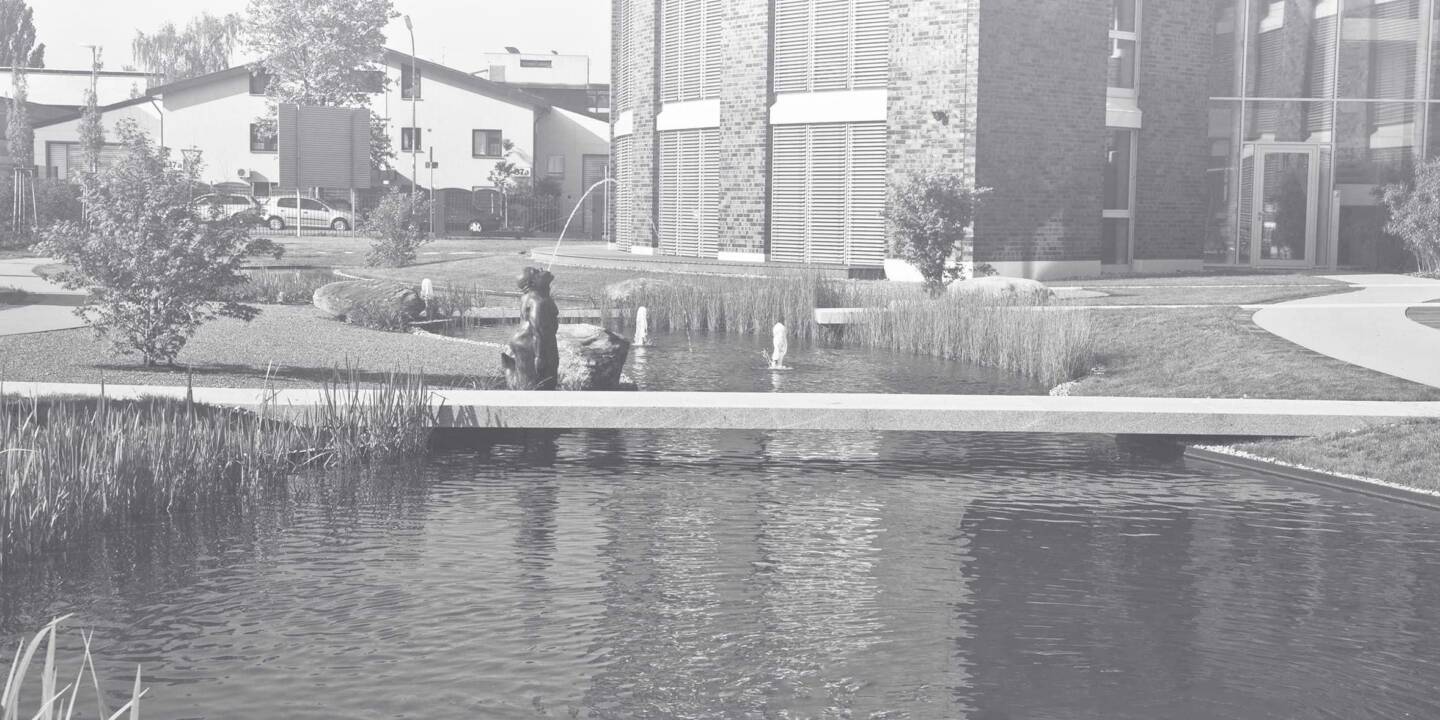Frequently asked questions
In what dimensions are post tensioned granite bridges available?
Like all Kusser products, post tensioned granite bridges are planned and fabricated according to the order. This means that you as the customer are not bound to standard dimensions. Spans of up to 20 m and monolithic widths of up to 380 cm are possible. Multiple bridge elements can be arranged side by side for wider bridges, so there is virtually no limit for bridge width. The required bridge strength results from the desired span in connection with the expected load influence on the bridge construction.
Which forms and cross sections are possible with post tensioned granite bridges?
The most common and economically viable design of post tensioned granite bridges is an orthogonal layout, with a rectangular cross section. Bridges with an oblique-angled layout can be manufactured within certain limits. Please note that an oblique-angled layout will increase the thickness of the superstructure and the amount of prestressed steel required. Non-rectangular bridge cross sections are also possible. The individual bridge segments are milled to the required form using CNC machines. Longitudinal arches cannot be made, or can only be made in very limited situations.
How strong are post tensioned granite bridges?
Post tensioned granite bridges are particularly suitable as foot and cycle path bridges. Service vehicles can also drive over them without any problems. The load influences are determined according to DIN EN 1991-2 in connection with DIN EN 1991-2/NA, or in accordance with the applicable technical building regulations, agreed upon separately with the builder.
What are the delivery times for post tensioned granite bridges?
Depending on the available production capacities, the pure manufacture of a post tensioned granite bridge can take between six and eight weeks. Realistic project terms, including planning and implementation, are between three and four months.
What are the costs for post tensioned bridges?
Typically, the pure construction costs for post tensioned granite bridges are a little higher than for conventionally built bridges from precast concrete parts or in-situ concrete. However, looking at the total costs over the life span of the construction (maintenance, upkeep, renovations, etc.), post tensioned granite bridges are the most cost-effective alternative for foot and cycle path bridges, even before the aesthetic advantages come into play.
What is the required upkeep for post tensioned granite bridges?
The upkeep of post tensioned granite bridges is minimal. Granite does not require waterproofing or bridge deck sealing, and is resistant to weathering in the long term. Depending on the model, only the balustrades, the joints at the ends of the construction, and the elastomer bearings may need to be replaced during the bridge’s life span.
Do the post tensioned granite bridges from Kusser have construction approval?
Yes. Our post tensioned granite bridges have been approved by the Deutsches Institut für Bautechnik (DIBt, German Institute for Structural Engineering) under the approval number Z-13.4-150.
What services does Kusser offer for post tensioned granite bridges?
This type of bridge requires a lot of experience in the application of granite tensioning processes. For this reason and for all projects, we take over the planning, structural analysis, production, and installation of the bridge superstructure. The balustrade can be delivered with the bridge if requested. Abutments, changes to the terrain, and connection to routes, are not part of our range of services. Local construction companies and engineering offices are typically responsible for this.
Why are post tensioned granite bridges not available in different natural stones?
The use of natural stone for load-bearing constructions places high demands on the quality of the stone. At the same time, the stone must be subjected to special tests, to check if it is suitable for post tensioning. Our Tittling fine grain is particularly suitable for the application in post tensioned granite bridges, and is regularly checked by a test program implemented by the DIBt.
What are the advantages of post tensioned granite bridges?
1. Granite is resistant to all weather conditions, without requiring waterproofing or bridge deck sealing. This reduces all the follow-on costs for maintenance and repairs.
2. The solid bridge provides seamless and accessible passage.
3. The achievable slender build of post tensioned bridges is unique.
4. The possible flow cross-section of post tensioned granite bridges is unmatched by more conventional structures. This means a clear reduction in the probability of flood water damage to the superstructure, amongst other things.
5. Post tensioned granite bridges are extremely sustainable, and therefore resource and environmentally friendly.
6. The life span of post tensioned granite bridges is extremely long. Granite has proven its durability in all weather conditions over thousands of years.
